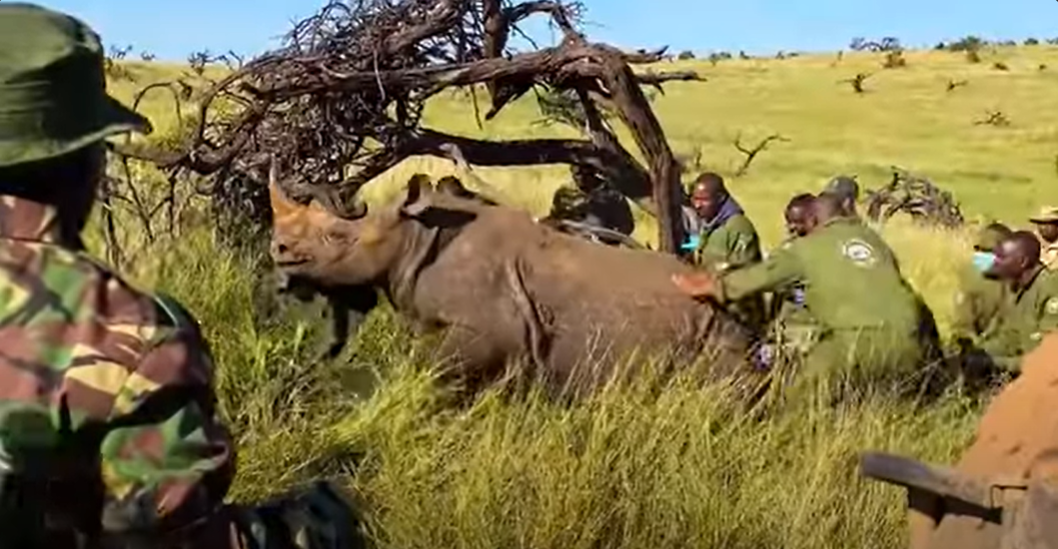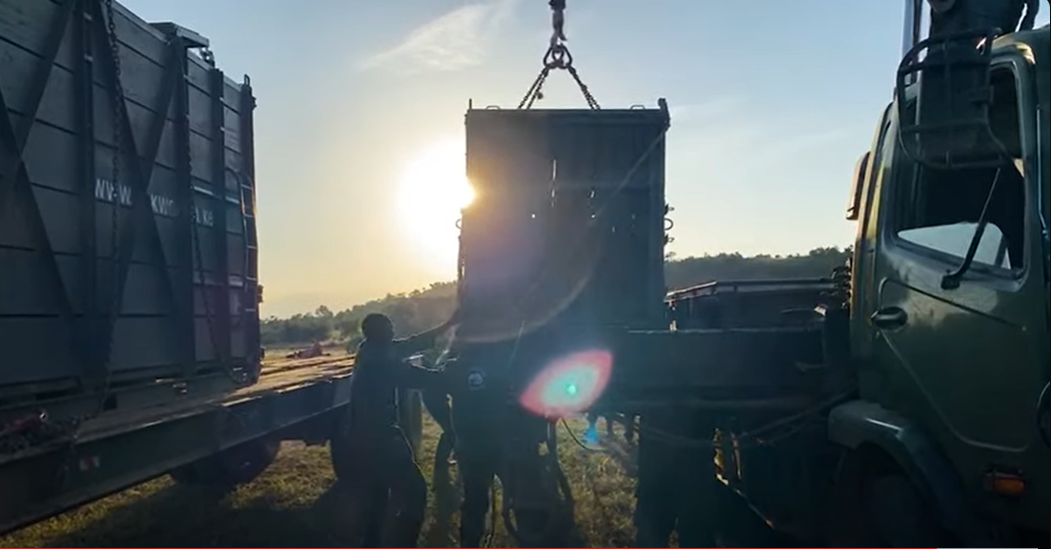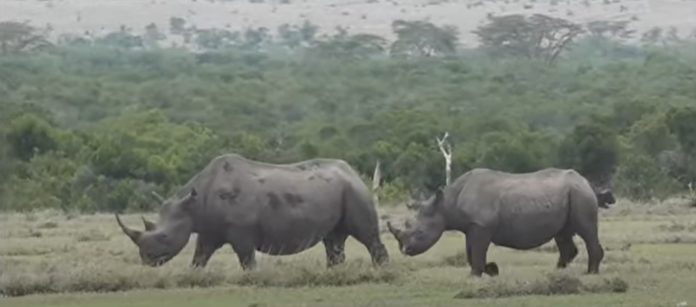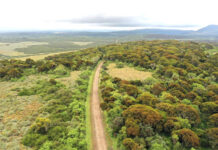By Sharon Barang’a
Laikipia County, Kenya: Once upon a time, black rhinos used to roam freely in Loisaba, Laikipia County. It was their habitat. A safe haven that was rudely disrupted by poachers. The beautiful plains that were once dotted by the wild animal – a part of the big five – began to witness dwindling numbers. The last rhinos were poached out of the area 50 years ago. But, the narrative is changing. The eastern black rhinos are being reintroduced into what was their native home. Prior to this, a lot had to be done to secure the rhinos and guarantee their safety. Security has been beefed up by the Kenya Wildlife Service(KWS).
Even though Loisaba was once home for the rhinos, the conservancy had to undergo in-depth ecological assessments from the KWS before they received the green light to provide a home to the animals that are being moved from congested parks and conservancies across the country.
In an 18-day exercise executed by highly trained capture and veterinary experts drawn from KWS and its partners, 21 rhinos – 10 males and 11 females – from Nairobi National Park, Ol Pejeta, and Lewa conservancies were moved to Loisaba. The team started by identifying the rhinos that were going to be translocated. The oldest rhino that is being moved is 14.6 years old Donald whose home was at the Olpejeta Wildlife Conservancy. The youngest of the 21 is 5.1 years old Safiya from Lewa Wildlife Conservancy.
The rhinos were then tranquilized before being ferried using two flatbed semi-trucks to their new home. Tom Silvester, CEO of Loisaba Conservancy is part of the team that is working hard to resettle the rhinos in the landscape.
“It’s incredibly exciting to be part of the resettlement of rhinos to a landscape where they’ve been absent for 50 years. I recognize the splendid role the Kenya Wildlife Service vet and entire translocation team played to oversee the successful return of this iconic species to this landscape and we are committed to partnering with like-minded conservationists to raise rhino numbers in Kenya,” said Tom.

The reintroduction of the 21 animals to their native home is a great milestone in Kenya’s rhino recovery action plan. Safeguarding this keystone species depends on creating more space and collaborating with communities and likeminded partners to help numbers recover.
Dr. Erustus Kanga, the Director General at Kenya Wildlife Service, said “I am elated to be associated with this momentous effort to secure more space for this cornerstone species. In the recent past, one of the main causes of mortality of rhinos has been territorial fights due to limited space in sanctuaries which has also led to suppressed growth rates due to competition for space and resources, leading to prolonged age at first calving, prolonged inter-calving intervals and more births of male calves, among other density dependent factors.”
In the 1970s, Kenya had 20,000 black rhinos. This number was decimated by poachers who were after their horns. The horns were sold as decorative dagger handles in Arabia and medicines in the Far East. By the time the Kenya Wildlife Service was established in 1989, rhino numbers had declined to below 400. Since then, Kenya’s eastern black rhinos have made a remarkable comeback and today there are an estimated 1,004 individuals.

Munira Bashir, the Kenya program Director at The Nature Conservancy said, “Surpassing the milestone of 1,000 rhinos within four decades is a significant accomplishment. Now, we aim to accelerate our progress towards a black rhino population of 2,000 through collaborative efforts with other conservation organizations. Our overarching goal is to achieve sustainability for these incredible animals, ensuring their well-being for generations to come.”
In terms of black rhinoceros numbers, Kenya now ranks third after South Africa and Namibia. Kenya is a stronghold of the eastern subspecies, hosting approximately 80 per cent of the entire world’s surviving population. Meanwhile, southern white rhinos continue to thrive in Kenya, having increased from 50 individuals that were imported from South Africa in the eighties and nineties to reach the current population of 971 individuals.
Dr. Max Graham the Chief Executive Officer and Founder of Space for Giants said, “The return of black rhinos to Loisaba is not only a testament to the effective leadership and skills of the Kenya Wildlife Service but also a demonstration of how impactful partnerships between governments and conservation NGOs can be for restoring, managing, and protecting our natural world. And, of course, the return of black rhinos here gives all of us one of the most precious commodities of all: hope.”
Loisaba conservancy started getting ready to receive the rhinos 4 years ago. The conservancy has set aside half of its 58,000 acres of land for the rhinos. The space will allow free movement of the animals.
Currently, Kenya has 17 sanctuaries where the rhinos have recovered since being on the brink of extinction decades ago. The rhinos reintroduced to Loisaba are expected to breed and further increase rhino population in the country.














